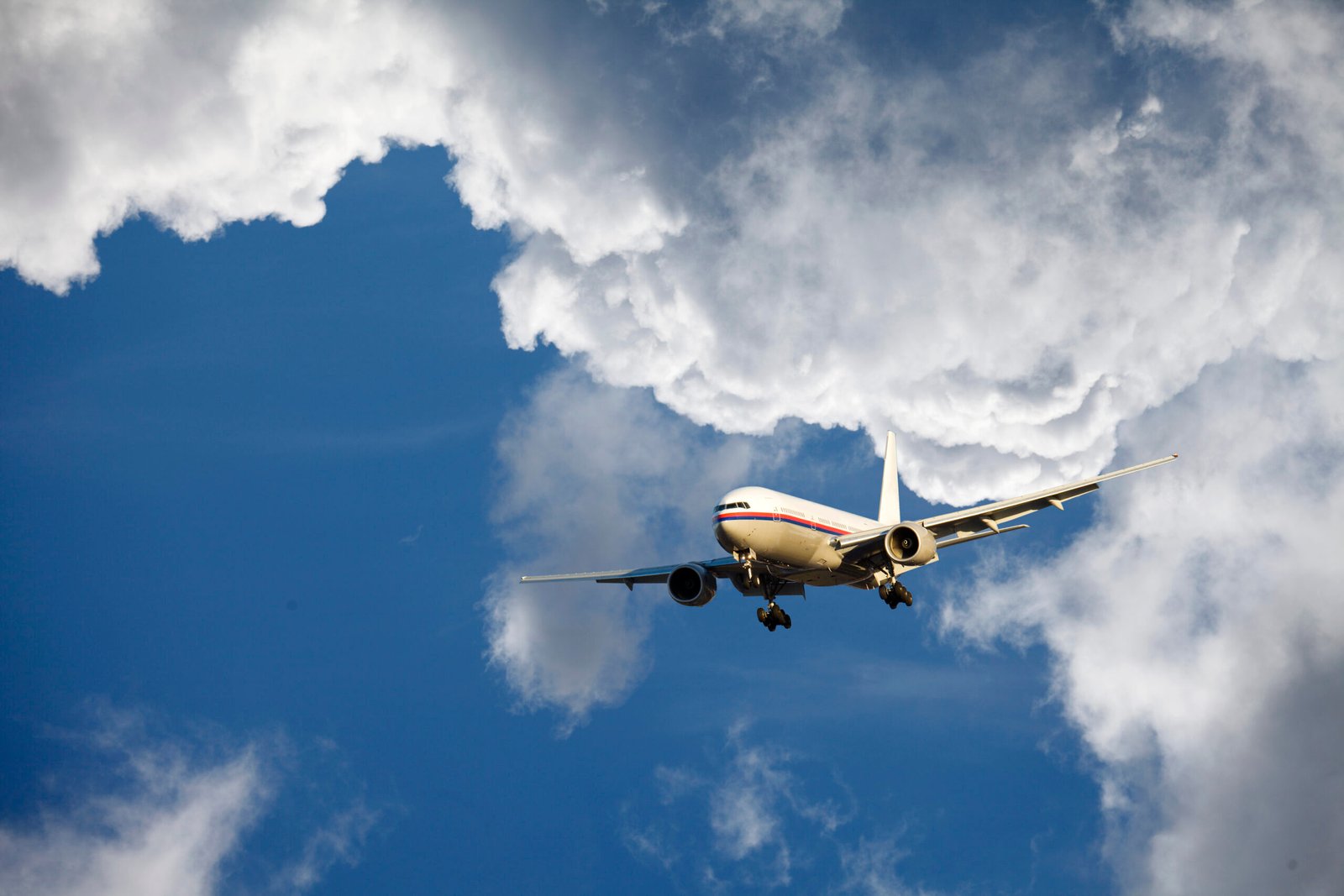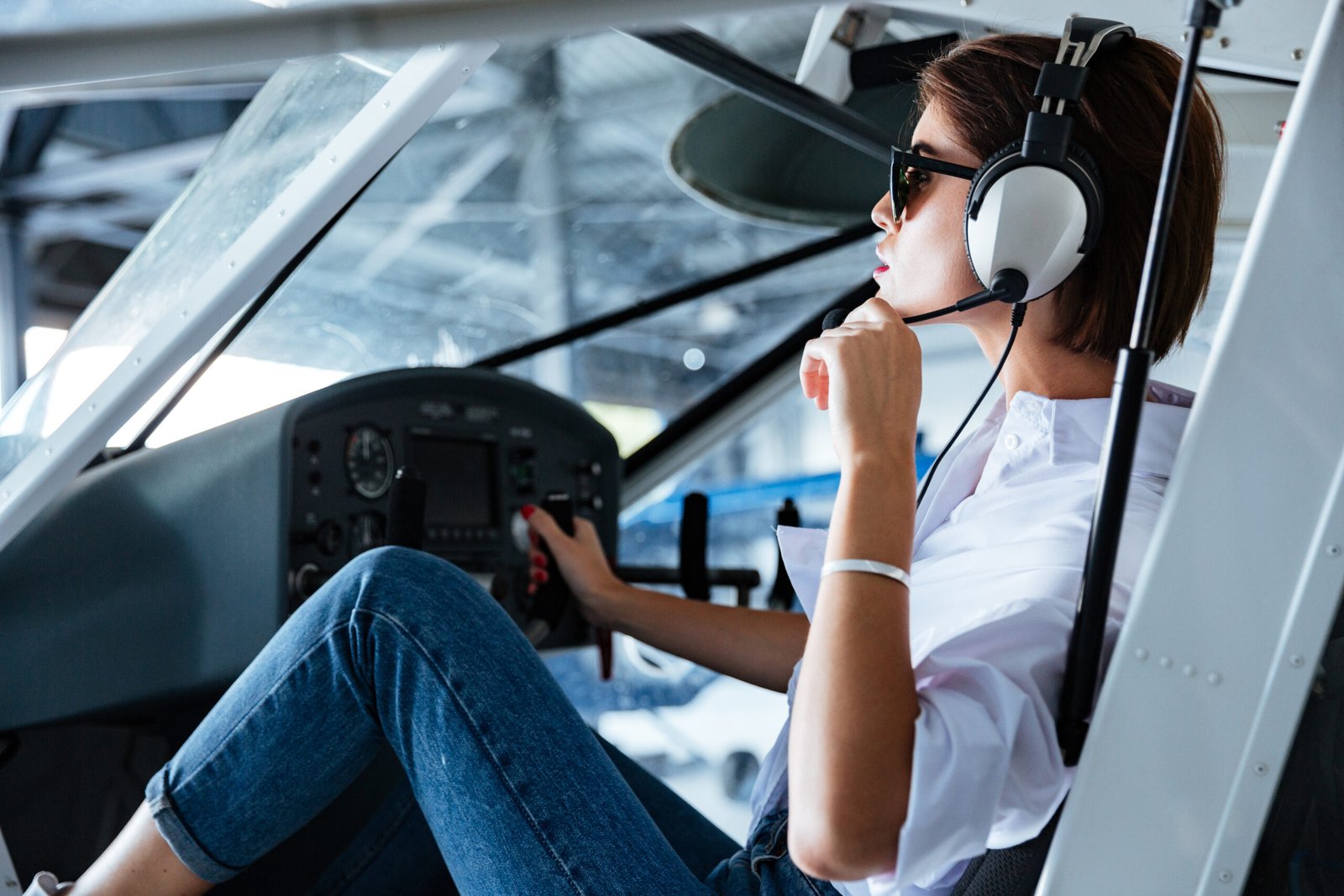pilot training
From Runway to Cloud: The Journey of an Airline Pilot
Becoming an airline pilot is a dream that dances in the minds of many aviation enthusiasts. But the journey from runway to cloud is paved with rigorous training, education, and passion. Let’s explore the diverse educational paths available for aspiring pilots, valuable online resources, and the critical role of FAA-approved flight schools.
*Aviation Schools by Types of Courses**
When it comes to pursuing a career in aviation, the choices can be overwhelming. Aviation schools offer various courses catering to different aspirations within the field:
1. **Private Pilot License (PPL) Programs:** These courses introduce students to fundamental flight principles, including navigation and aircraft operations. Ideal for those who want to fly recreationally or gain foundational skills.
2. **Commercial Pilot License (CPL) Courses:** For those aiming to make flying their profession, CPL programs dive deeper into advanced flying techniques, regulations, and flight planning.
3. **Airline Transport Pilot (ATP) Certification:** This is often regarded as the pinnacle of pilot certifications. ATP courses prepare candidates for positions with airlines and cover extensive knowledge on multi-engine operations and complex aircraft systems.
4. **Flight Instructor Ratings:** Many pilots choose to become Certified Flight Instructors (CFI) after obtaining their CPL or ATP credentials. This path allows them not only to gain hours but also share their passion for flying with future aviators.
5. **Specialized Training Programs:** These include courses on specific aircraft types or advanced maneuvers such as aerobatics or bush flying—perfect for those looking to specialize further.
*A List of Aviation Blogs, Websites, and Social Media Sites**
In this digital age, staying informed about trends in aviation is easier than ever! Here are some must-follow blogs and websites:
**Airline Reporter:** This blog covers airline news with a focus on technology and travel experiences.
**AvWeb:** A comprehensive source for aviation news that includes articles on safety issues and industry updates.
**Flying Magazine:** A well-respected publication that offers insights into pilot training, aircraft reviews, and real-life flying stories.
For social media enthusiasts:
**Instagram (@aviationdaily):** Follow stunning aerial photography showcasing breathtaking views from above.
**Twitter (@airlinepilotlife):** Tweets from airline pilots sharing day-to-day experiences in the cockpit.
**YouTube Channels like “Captain Joe” provide educational content alongside entertaining vlogs about life as a pilot.
*FAA Flight Schools/Airplane Schools/Simulators**
Navigating through your choices requires attention when selecting an FAA-approved flight school. These institutions adhere strictly to federal regulations ensuring high training standards:
**Part 61 vs Part 141 Schools:** Part 61 schools offer more flexible schedules tailored for working individuals while Part 141 schools provide structured curriculums ideal for full-time students aiming at quicker completion times.
**Simulator Training Facilities:** With advancements in technology, many flight schools incorporate advanced flight simulators into their curricula. Simulators allow students to practice emergency procedures safely without leaving the ground—an invaluable part of modern pilot training.
As you embark on this fascinating journey toward becoming an airline pilot—from mastering theoretical knowledge at a classroom desk to soaring through clouds—it’s essential to immerse yourself fully in both educational resources and community connections within aviation circles. Each step taken builds towards that exhilarating moment when you take control of an aircraft destined for horizons unknown!

Behind the Scenes of Aviation: A Day in the Life of an Airline Pilot
Ever wondered what it’s like to soar through the sky as an airline pilot? The journey begins long before takeoff, often in aviation schools where aspiring pilots gain essential knowledge and skills. These institutions offer a variety of courses tailored to different aspects of aviation. For instance, flight training can be divided into several key areas: private pilot training, instrument rating, commercial pilot certification, and airline transport pilot (ATP) preparation. Each course builds on the last, creating a comprehensive path toward a successful career in aviation.
Private pilot courses focus on foundational flying skills and regulations, allowing students to command small aircraft. As they progress to instrument ratings, they delve deeper into navigation and flying under various weather conditions. The commercial pilot course elevates students from recreational flying to professional standards, while ATP programs sharpen their skills for handling larger aircraft that operate in commercial airspace.
Once equipped with knowledge from these schools, many pilots turn to various online resources for continued learning and community engagement. Blogs and websites dedicated to aviation offer insights into industry trends, personal experiences, and technical advice that can prove invaluable. Some popular sites include Airliners.net for photography enthusiasts and Plane & Pilot Magazine for detailed articles covering everything from technical innovations to safety tips.
Social media platforms have also become vital tools for networking among pilots. Twitter hosts lively discussions about current events affecting aviation; Instagram showcases stunning aerial shots; LinkedIn connects professionals across the industry. Facebook groups create tight-knit communities where members share stories or seek advice—an excellent way for new pilots to learn from seasoned veterans.

However, education doesn’t stop at traditional classroom settings or online forums; FAA-certified flight schools play a significant role in shaping future aviators. These institutions provide hands-on training with experienced instructors who guide students through every aspect of flying—from pre-flight checks to landing procedures. Schools like Embry-Riddle Aeronautical University or Purdue University are renowned for their rigorous programs that emphasize both theoretical knowledge and practical application.
Simulators are another essential component of modern flight training. They allow students to practice various scenarios without leaving the ground—perfectly safe yet incredibly realistic environments where they can hone their skills under pressure. Whether it’s dealing with engine failure or navigating adverse weather conditions, simulators prepare pilots mentally for real-world challenges before they step into the cockpit of an actual aircraft.

As dawn breaks on a typical day in the life of an airline pilot, excitement fills the air—both literally and figuratively! After arriving at the airport early in the morning, pilots conduct thorough pre-flight checks alongside ground crew members. This meticulous attention ensures that every detail is accounted for before embarking on flights that may span thousands of miles.
The cockpit becomes their second home as they communicate with air traffic control while navigating complex routes above bustling cities and sprawling landscapes below them. Every landing represents not just a physical return but also an emotional one—a moment when dedication meets passion high above the clouds.
In conclusion, becoming an airline pilot involves much more than simply sitting behind controls; it requires extensive education through aviation schools offering diverse courses alongside invaluable resources available online today.
With commitment coupled with exploration within this dynamic field—the sky truly is not just a limit but rather a boundless horizon waiting to be discovered!
The Future of Air Travel: Innovations Shaping the Skies
As we soar into the future, the world of aviation is undergoing a remarkable transformation. New technologies, innovative educational programs, and social platforms dedicated to air travel are shaping how we think about flying. Whether you’re a seasoned pilot or an enthusiastic novice, understanding these changes can dramatically enhance your journey through the skies.
### Aviation Schools: A Diverse Curriculum
The foundation of any successful career in aviation begins with education. Aviation schools offer a variety of courses designed to meet diverse interests and career paths. Here’s a breakdown of some key types:
1. **Pilot Training Programs**: These programs focus on teaching individuals how to fly different aircraft types, ranging from small single-engine planes to larger commercial jets. Students learn not only about aerodynamics but also flight regulations and safety protocols.
2. **Aviation Management**: For those interested in the business side of air travel, aviation management courses provide insights into airport operations, airline management, and logistics. This path prepares students for leadership positions within the industry.
3. **Aircraft Maintenance Engineering**: Keeping airplanes in tip-top shape is critical for safety and efficiency. Programs in this field teach students about aircraft systems, repair techniques, and regulatory compliance.
4. **Air Traffic Control**: Aspiring air traffic controllers must undergo specialized training that emphasizes communication skills and quick decision-making under pressure.
5. **Unmanned Aerial Systems (UAS)**: With drones becoming increasingly prevalent in various sectors—ranging from delivery services to agriculture—courses focusing on UAS offer insight into piloting unmanned vehicles safely and effectively.
### Leading Resources for Aviation Enthusiasts
For anyone wanting to stay updated on aviation trends or connect with like-minded individuals, there are countless blogs, websites, and social media platforms available:
**Blogs**:
– *AirlineReporter*: This site dives into airline news while offering unique perspectives on flying experiences.
– *The Points Guy*: Focused primarily on travel points and frequent flyer programs but rich in overall travel advice.
– *Flying Magazine*: An informative resource for pilots covering everything from technical articles to personal stories.
**Websites**:
– *AOPA (Aircraft Owners and Pilots Association)*: A go-to hub for pilots seeking information about regulations, safety tips, and advocacy.
– *FlightAware*: Real-time flight tracking data that serves as both an informative tool for travelers as well as an educational resource for budding aviators.
**Social Media Platforms**:
– Instagram accounts like @aviationdaily showcase stunning aerial photography.
– Twitter hashtags such as #AvGeek foster vibrant discussions among aviation enthusiasts worldwide.
### FAA Flight Schools & Simulators
When it comes to gaining practical experience alongside theoretical knowledge, FAA-approved flight schools are essential. These institutions adhere strictly to federal guidelines ensuring high-quality training environments. They offer comprehensive programs featuring ground school instruction paired with hands-on flight training—often using advanced simulators that replicate real-world flying scenarios without leaving the ground.
Using flight simulators provides aspiring pilots invaluable practice while enhancing their skills in a controlled environment before taking to the skies themselves. From basic maneuvers to complex emergency situations, simulators prepare students for virtually any challenge they may encounter during actual flights.
In conclusion, the future of air travel is bright thanks to innovative educational opportunities and resources designed specifically for aspiring aviators. As technology evolves at lightning speed, so too will our methods of training pilots and managing air traffic—ensuring safe travels well into the next era of aviation!

Navigating Turbulence: How Aviation Adapts to Global Challenges
In a world where uncertainty and change are constants, the aviation industry continues to demonstrate remarkable resilience and adaptability. From evolving technological landscapes to shifting regulatory frameworks, the sector faces numerous challenges head-on. Central to this evolution is education, which plays a pivotal role in preparing the next generation of aviation professionals.
*Aviation Schools: Types of Courses**
Education in aviation is as diverse as the field itself. Various schools offer specialized programs that cater to different interests and career paths. Here’s a breakdown of some common types of courses available:

1. **Pilot Training Programs**: These are perhaps the most well-known offerings, encompassing private pilot licenses (PPL), commercial pilot licenses (CPL), and airline transport pilot licenses (ATPL). Students learn not just how to fly, but also about navigation, meteorology, and aircraft systems.
2. **Aircraft Maintenance Engineering**: For those inclined towards technical expertise, these courses focus on maintaining and repairing aircraft systems. They cover everything from jet engines to airframe structures.
3. **Air Traffic Control Training**: Aspiring air traffic controllers undergo rigorous training that includes simulations and real-time decision-making exercises to ensure safe skies.
4. **Aviation Management Programs**: These courses prepare students for administrative roles within airports or airlines, focusing on operations management, finance, marketing, and human resources specific to aviation.
5. **Unmanned Aerial Systems (UAS)**: With the rise of drones in commercial applications—from delivery services to agricultural monitoring—these programs teach students how to operate and manage UAS effectively.
Each type of course equips individuals with unique skills tailored for various sectors within aviation.
*Aviation Blogs, Websites & Social Media Sites**
Staying informed about industry trends is crucial for aviation enthusiasts and professionals alike. Here’s a list of noteworthy blogs, websites, and social media platforms dedicated to aviation:
**Airliners.net**: An extensive online community showcasing photographs and discussions surrounding various aircraft.
**The Points Guy**: This blog covers travel tips, loyalty programs, and airline reviews—perfect for frequent flyers seeking insight.
**Flying Magazine**: A treasure trove for pilots featuring articles on flying techniques, safety tips, gear reviews, and more.
**FlightAware.com**: Offers real-time flight tracking data along with insights into airport operations.
**YouTube Channels like Mentour Pilot & Captain Joe**: These channels provide engaging video content ranging from flight tutorials to behind-the-scenes glimpses at airline operations.
Social media platforms such as Instagram or Twitter also host vibrant communities showcasing stunning aerial photography or sharing personal flying experiences under hashtags like #AvGeek or #PilotLife.
*FAA Flight Schools & Simulators**
The Federal Aviation Administration (FAA) plays an integral role in regulating flight schools across the United States. FAA-approved flight schools maintain rigorous standards ensuring quality education in piloting techniques as well as compliance with safety regulations.
Many schools now incorporate advanced simulators into their curriculum—enabling students to practice flying in highly realistic environments without the risks associated with actual flights. These simulators range from basic setups mirroring small aircraft cockpits all the way up to full-motion simulators simulating large commercial jets.
As global challenges continue to shape industries worldwide—from climate change initiatives prompting greener technologies in aviation vehicles to navigating post-pandemic recovery—the educational backbone provided by diverse aviation courses ensures that professionals are ready for whatever turbulence may lie ahead.
In conclusion, through innovative training programs and robust online resources combined with FAA oversight on flight education standards—even amidst adversity—the world of aviation remains steadfastly airborne!
The Future of Flight: Innovations Shaping Aviation in the 21st Century
As we soar into the 21st century, aviation continues to evolve at an unprecedented pace. From cutting-edge technology to innovative training methods, the industry is on the brink of a transformation that promises to redefine flight as we know it. This post will explore key aspects shaping the future of aviation, including various educational pathways, valuable online resources, and advancements in flight training.
*Aviation Schools by Types of Courses**
Education plays a pivotal role in preparing the next generation of aviators. There are several types of aviation schools catering to diverse career paths within this dynamic field.
1. **Pilot Training Schools**: These institutions specialize in training aspiring pilots through programs that include Private Pilot License (PPL), Commercial Pilot License (CPL), and even Airline Transport Pilot (ATP) certification. Students engage in both ground school and hands-on flying experience.

2. **Aviation Maintenance Schools**: For those interested in aircraft maintenance and repair, these schools offer courses leading to Airframe and Powerplant (A&P) certification. Students learn vital skills such as troubleshooting mechanical issues and performing routine inspections.
3. **Air Traffic Control (ATC) Programs**: With air traffic becoming increasingly complex, ATC programs train individuals to manage airspace efficiently. Coursework includes communication protocols, radar operation, and emergency procedures.
4. **Aerospace Engineering Colleges**: These universities provide a deeper understanding of aircraft design and technology development. Courses often cover aerodynamics, avionics systems, and materials science.
5. **Flight Operations Management Degrees**: Focusing on the business side of aviation, these programs prepare students for roles in airline management or airport operations through classes on logistics, safety regulations, and financial management.
*Lists of Aviation Blogs, Websites, Social Media Sites**
In addition to formal education, staying informed about industry trends is essential for anyone passionate about aviation. A plethora of blogs and websites serve as excellent resources:
**AirlineReporter.com:** Known for its engaging articles on airline experiences.
**FlyingMagazine.com:** Offers insightful content covering everything from pilot tips to equipment reviews.
**AvWeb.com:** A well-rounded site featuring news updates and analysis pertinent to all things aviation.
**Jetwhine.com:** Focuses on insights from experienced pilots and industry professionals.
Social media platforms are also buzzing with aviation enthusiasts sharing their adventures:
On Instagram, follow accounts such as @aviationdaily for stunning aerial photography.
Twitter hosts lively discussions with handles like @avgeekery providing real-time updates.
Facebook groups like “Pilot’s Lounge” foster community among budding aviators by facilitating networking opportunities.
*FAA Flight Schools/Airplane Schools/Simulators**
The Federal Aviation Administration (FAA) ensures high standards for flight education in the United States through its network of recognized flight schools. Enrolling in an FAA-certified flight school guarantees access to professional instructors who adhere strictly to regulatory guidelines.

Additionally, many schools incorporate advanced flight simulators into their curriculum—an invaluable tool allowing students to practice navigation skills without leaving the ground! These simulators replicate real-world scenarios that pilots may encounter while flying commercially or privately.
In conclusion, as innovations continue shaping aviation from educational methodologies to technological advancements in training tools like simulators, it’s an exhilarating time for those entering this field. The blend of traditional knowledge with modern techniques ensures that future pilots will not only be equipped but also empowered to navigate the skies safely for years ahead!


